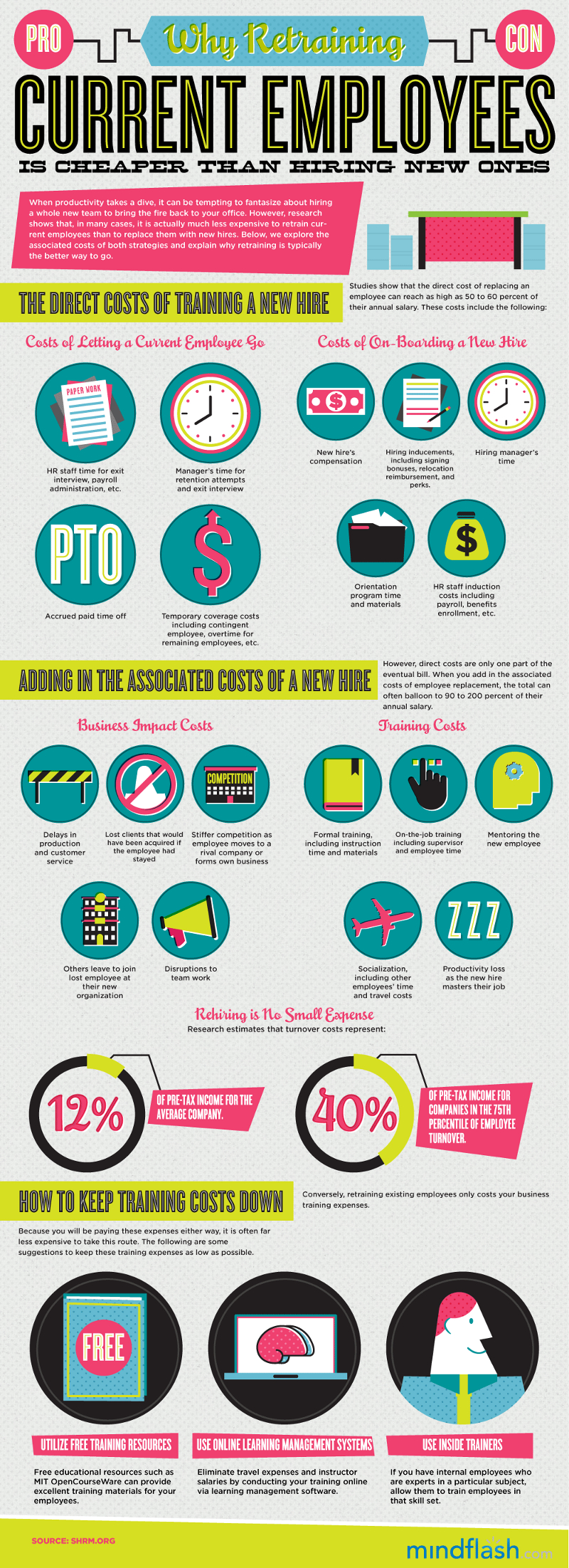
Most Recommended Posts:
24 Must See Social Media Marketing Infographics
17 Incredible SEO Infographics
The True Cost of New Hire
Do you know how high the cost of new hires is?
Adding a worker to the payroll isn’t cheap, no matter how you look at it. There are a multitude of costs both direct and indirect that quickly add up.
According to the ASTD (American Society for Training & Development) U.D. organization spent $125.88 billion in 2009 just on employee learning and development. Over 60 % of this total (78.61 billion dollars) was spent on the internal learning function. The rest of the total (47.27 billion dollars) went towards external services.
Research based on the data from the U.S. Bureau of Labor Statistics, revealed the average direct cost for a new hire is $57,968 (this figure excludes any training costs).
This cost is broken down to:
• Basic wages – $40,630
• Benefits & taxes – $17,065
• Other expenses – $237
In addition, the average learning expenditure for each employee increased by 1.2 %. That is from $1,068 in 2008 to $1,081 in 2009.
Time Is Money
The average time it takes for hiring a new candidate is known as “time to fill”. This is measured from when the human resources staff gets the job requisition order. This is a useful metric to help recruitment staff:
• Determine the lead-time for bringing in a new worker.
• Setting a performance benchmark for the HR departments.
• Improve employee productivity.
Learning hours also need to be managed, to improve employee output. The average number of learning hours produced by each learning staff decreased from 353 to 264 (in the period from 2008 to 2009).
The Employee Turnover Cycle
On average it costs $5,500 to replace an employee who earns $8 an hour (without including benefits). This means the average cost of replacing an 8$ an hour worker could be one third or half of their annual salary.
Turnover costs can include a number of factors such as:
• Administration costs for the employee leaving
• Operational costs for the employee leaving
• Recruitment related costs for a newly hired employee
• Training and learning costs for the replacement employee
• Lost productivity time for the new hire
• Administration costs for the new employee
• Operational costs for adding a new employee
In conclusion, organizations need to make the right choices when considering who to hire. Choosing the wrong employee will be highly costly. Employee retention should be a major focus of all successful companies.
Although millions of people visit Brandon's blog each month, his path to success was not easy. Go here to read his incredible story, "From Disabled and $500k in Debt to a Pro Blogger with 5 Million Monthly Visitors." If you want to send Brandon a quick message, then visit his contact page here.
